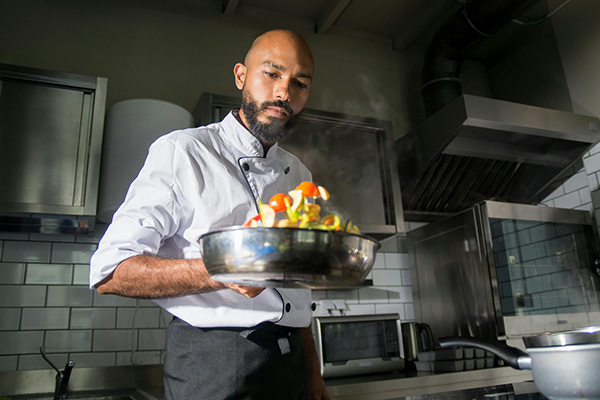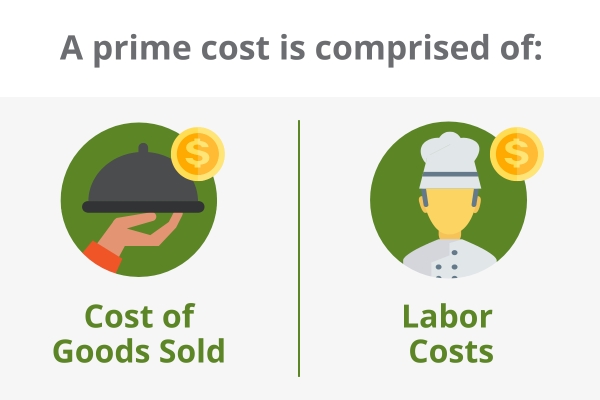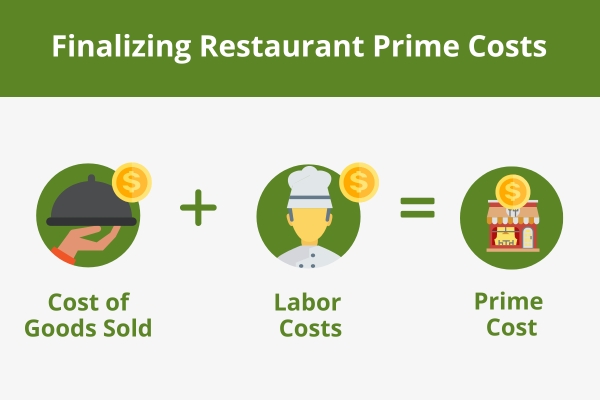
|
What is a Restaurant Prime Cost? And Why It Matters
June 11, 2024

Prime costs, also known as direct costs, are essential to determine a restaurant's financial health. A prime cost is comprised of two financial foundations:
- Cost of Goods Sold (COGS): Expenses related to food and beverages sales
- Labor Costs: Wages and benefits for service and culinary teams

Calculating prime costs is like having a crystal ball, providing owners and managers with crucial insights into profitability, operational efficiency, and overall revenue streams. With this knowledge, restaurants can avoid underpricing their menus, overlooking excessive food waste, and miscalculating wages.
Read on to learn how your prime cost reflects your restaurant’s health and growth.
How Do You Calculate Prime Costs?
The overall formula for figuring prime costs is straightforward to implement. Operators simply need to add their COGS and labor costs, and the sum is the prime cost. While the calculation is easy, there are a few steps to take before factoring everything in. By mastering this simple process, you can glean a clear understanding of your restaurant's financial health.
Determining Cost of Goods Sold At Your Restaurant
COGS refers to any purchases directly related to producing goods. This includes:
- Food costs, such as meats, seafood, produce, dairy, pantry goods, and spices.
- Beverage purchases, including alcohol, mixers, and non-alcoholic drinks
- Condiments and sauces
- Packing materials, paper products, office supplies, labels, and disposable diningware
- Cleaning supplies specific to kitchen and dining areas
- Cooking and prep incentives such as foil, parchment, plastic wrap, and kitchen towels
To assess COGS there is a simple formula, which utilizes standard inventory data.
COGS Formula: Starting inventory value + Purchases over a specific timeline–Ending inventory value=COGS
For example, let's say your opening inventory was $5,000 on June 1st. Over 30 days, you purchased $15,000 in products, and your ending inventory value was $6,000 on June 30th.
$5,000 + $15,000 - $6,000=$14,000 (COGS)
Tallying Labor Expenses
Labor costs extend beyond employee wages and salaries for the front and back of the house. Labor costs also encompass:
- Benefits, including paid time off, retirement plans, and health insurance
- Overtime pay
- Bonuses and staff incentive packages
- Payroll taxes and other costs
- Staff meals for the crew
- Uniforms
- Training and employee development
Gauging labor cost totals simply requires all aspects of labor costs to be added together.
Formula:
Total wages + Benefits + Payroll expenses + Training + Misc. Labor costs = Labor total
For example:
$16,000 + $3,500 + $1,200 + $700 + $600 =$22,000 (Labor)
Finalizing Restaurant Prime Costs
We can calculate a prime cost using the two totals from the examples above and then convert the number to a percentage cost.
The easiest way to check whether a prime cost is above or below healthy margins is to convert the dollar amount into a percentage.

Formula:
COGS + Labor = Prime Cost
$14,000 + $22,000=$36,000
Healthy margins refer to the portion of sales left after deducting prime costs. A higher prime cost percentage indicates that a larger portion of sales goes towards direct costs, leaving less for other expenses and potential profit.
Formula:
Take the prime cost, divide it by total sales, then multiply by 100
$36,000/ $64,00 x 100 =56.25 (or 56.25 percent)
Target Prime Cost Percentages
Every establishment is unique, so there isn’t a universal percentage every restaurant should hit. However, as a general rule of thumb, eateries that aim for a 60 percent or lower margin are ideal. A higher prime cost percentage indicates that a larger portion of your sales is going towards direct costs, leaving less for other expenses and potential profit.
How to Meet Prime Cost Targets
If your prime cost percentages aren’t what you were expecting and want to work on managing margins, here are some quick ideas to bring costs down:
Lower Food Costs With US Food CHEF’STORE
At CHEF’STORE, we offer competitively priced products that exceed expectations! From beverages to meat and seafood, fresh produce, and more, we have everything you need under one roof to meet your budget.
Looking for business resources to elevate your restaurant? We have that, too!